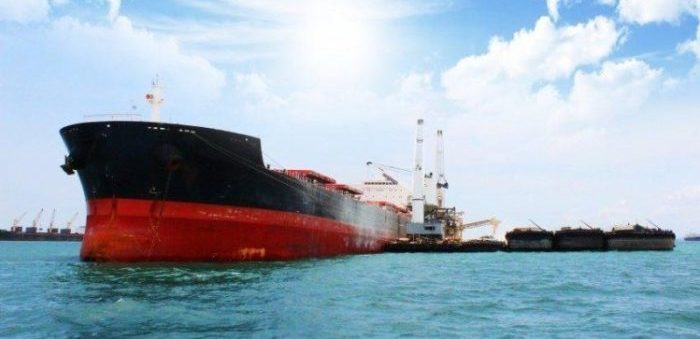MOL says that the dry bulk market will weaken because of uncertainty over the trade war between the US and China. In addition, the very large crude oil carrier (VLCC) market has gradually weakened since the start of 2019, after peaking at the end of 2018.
In the Capesize bulk market during the first half of the fiscal year, the market rate increased due to a recovery in iron ore shipments from Western Australia and Brazil but then weakened through to the end of the second quarter.
[smlsubform prepend=”GET THE SAFETY4SEA IN YOUR INBOX!” showname=false emailtxt=”” emailholder=”Enter your email address” showsubmit=true submittxt=”Submit” jsthanks=false thankyou=”Thank you for subscribing to our mailing list”]
However, in November, concern over worsening in vessel supply-demand dynamics caused by a freight train derailment in Australia led to panic selling in some parts of the market and caused the rate to fall sharply. Nevertheless, from late November, the market recovered thanks to the returned spot demand.
As for the Panamax market, it held firm in the first half of the fiscal year, supported by steady volumes of mainstay cargoes like coal and grain shipments from South America. This trend continued into the first half of October. However, lackluster grain shipments from North America during trade friction between the US and China and China’s temporary restriction of coals imports caused the rate to weaken. For this reason, the dry bulk business posted a year-on-year increase in ordinary profit.
Moreover, the very large crude oil carrier (VLCC) market picked up from the first half of the fiscal year when the market was weak because of reducing transportation demand due to seasonal factors. During the third quarter, the market was strong because of factors such as the arrival of the winter demand period and increased crude oil exports from West Africa and North America as alternative sources to crude oil from Iran.
In addition, the product tanker market picked up from the first half of the fiscal year when the market was weak mainly due to excessive vessel supply, and from the second half of November, the market recovered thanks to the arrival of the winter oil demand period and tighter vessel supply-demand dynamics reflecting the allocation of some large product tankers to the transportation of other commodities such as crude oil and heavy oil. Because of these conditions, the tanker division posted a year-on-year decline in ordinary profit despite efforts to improve operating efficiency through pool operations and limit costs.
Providing its expectations for the new year, MOL notes that the dry bulk market will weaken amid uncertainty over the trade war between the US and China and seasonal factors such as a slowdown in iron ore shipments with the start of the rainy season in Brazil and Australia and decreased demand during Chinese New Year.
However, there is not much time left before the end of the fiscal year and the impact on full-year ordinary profit is expected to be limited
Finally, after peaking at the end of 2018, the very large crude oil carrier (VLCC) market has weakened since the beginning of 2019 and MOL expects repeated ups and downs until the end of February, which is the winter demand period. The product tanker market will continue to hold firm, reflecting the winter demand period.






























































